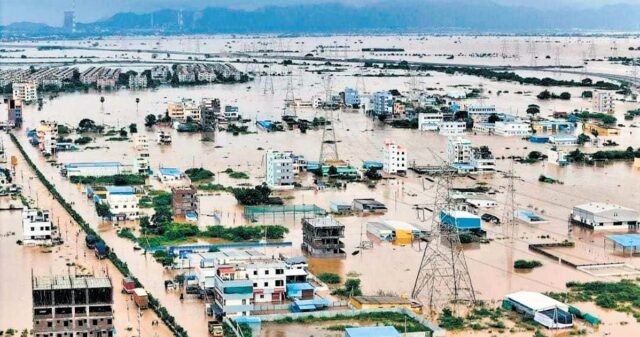VIJAYAWADA: The devastating flash flood in Budameru Rivulet on Saturday night (August 31) paralyzed life in more than half of Vijayawada and over 2.7 lakh people were stranded in the marooned houses. Even after four days, normalcy is yet to be restored.
What is Budameru and what led to the flash flood that has shaken the city and a sparked political slugfest?
Budameru is a small rivulet that originates in the erstwhile Khammam district on the border of Andhra Pradesh and Telangana. The major drain, as defined by the Water Resource Department, meanders through Mylavaram Assembly constituency of the NTR district and in its course several streamlets and water bodies drain into it along with excess water from agriculture fields.
Some of the streams that join Budameru are Pulivagau, Bhim Vagu, Loyavagu in Reddigudem, Mylavaram, and G Kondur. Some streams from Vissannapet and Tiruvuru also join Budameru. It flows towards the northern parts of Vijayawada and from there towards Kolleru passing through Gudavalli, Gannavaram, Bapulapadu, Gudivada, and Nandivada.
Budameru has been flooding the city every rainy season earning the sobriquet ‘Sorrow of Vijayawada’. The discharge capacity of this major drain is 11,000 cusecs of water. To control the floods, the river was dammed at Velagaleru village, and a diversion channel, the Budameru Diversion Canal (BDC), was constructed from Velagaleru to join the Krishna River upstream of the Prakasam Barrage. However, the discharge capacity of BDC is very low and its modernisation was never done. To release water into Krishna River from Budameru, the water levels of the Krishna River should be less than 12 feet, otherwise, the flood water will be pushed back with the same intensity as of the river water.








